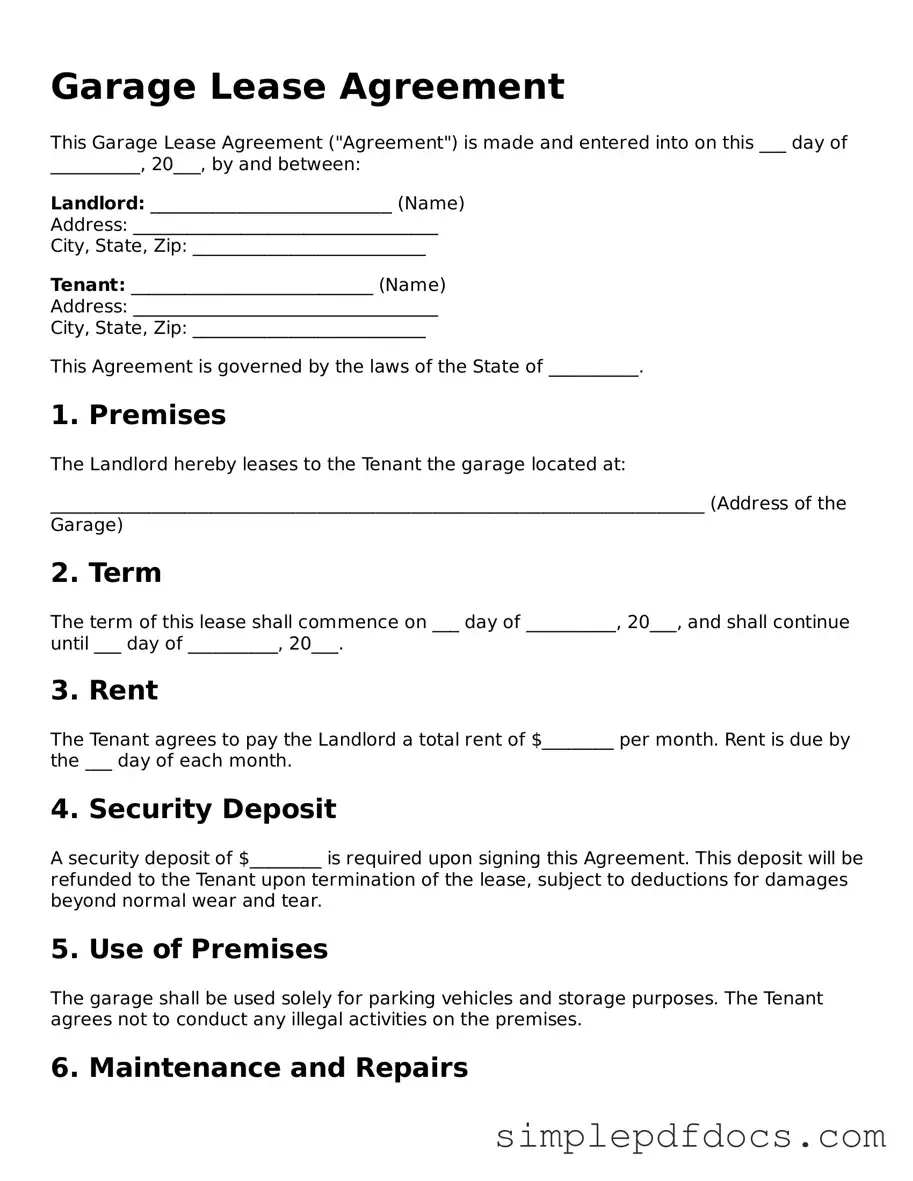Attorney-Approved Garage Lease Agreement Form
A Garage Lease Agreement is a legal document that outlines the terms and conditions under which one party rents a garage space to another. This agreement protects both the landlord and the tenant by clearly defining responsibilities, payment details, and duration of the lease. Understanding this form can help ensure a smooth rental experience for both parties involved.
Get Document Here
